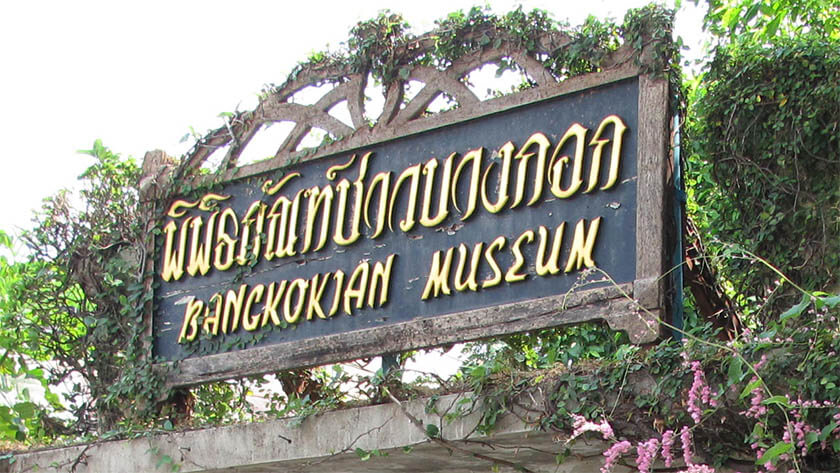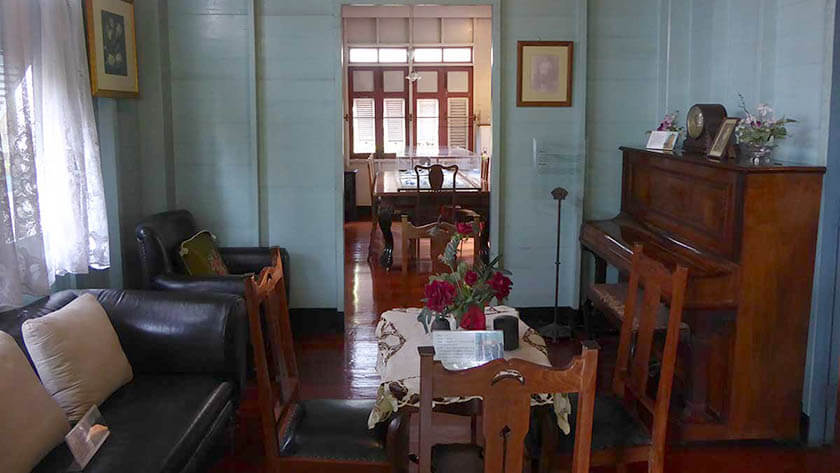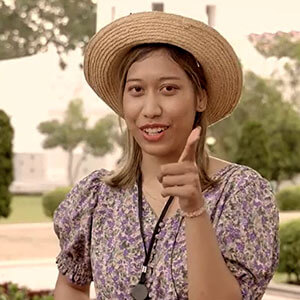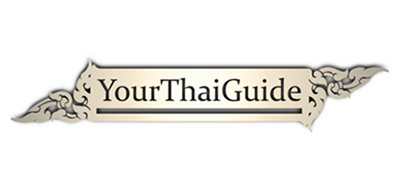The Bangkokian Museum is a trio of restored heritage houses standing in the cool shade of surrounding trees. The Bangkokian Museum displays what upper middle-class homes looked like in Bangkok during the early to mid-20th century. Despite being in a very busy area of Bangkok, the gardens are a peaceful haven. The museum was bequeathed to the Bangkok Metropolitan Administration by its previous owner.
The houses were donated as a museum to the city in 2004 and the interiors are arranged in the style indicative of the World War II era. Old black-and-white photographs of the original residents, original four-post beds, crystal, big upright pianos and cigar and tin collections all combine to give the Bangkokian an authentic and charming feel that many museums in Bangkok can’t reproduce. Gardens and fountains fill out the site, making this a tranquil place to take a break from the city.

The museum sits quietly down an otherwise normal side street off Charoen Krung Road, in the historic Bang Rak area.
The main house, built in 1937, has original louvered wood shutters and features a broad front stoop. Inside the main house, immaculately varnished wooden floors lead to a living room, dining room, bedrooms and washroom that will transport you to the World War II era.
Every room has the original Bakelite switches, antique clocks, valve radios and cabinets. If it wasn’t for some of the most valuable items being housed in glass boxes, you would almost expect the family to walk in and begin their daily rituals at any moment. Some of the items housed in glass include old Benjarong style jars made from Thai porcelain in five basic colors, from the King Rama V period. Other porcelain pieces are from the early Rattanakosin era.
Head through to the wide deck at the back of the property to reach the second house, built in 1929. Originally the home of an Indian-British doctor who rented from the owners, it features a large open-sided living area on the ground floor, and an office and bedroom upstairs. Also on display here is his cigar collection, and various stoves dating back to the early-20th century. The style of this home is very different. Almost all of the walls, floors and ceilings are made of dark teak wood with more windows and less wall space. The ground floor holds a small dining area and office while the upper floor features a large bedroom with an immaculately waxed floor. Again, everything is set to welcome guests and the bed is made, ready and waiting for its owner.

The third building houses a kitchen and woodworking area on the ground floor, complete with old woks, ceramic stoves and rusty tools. Upstairs, there’s an eclectic display of vintage toys, dishes and advertisements, including many from post-World War II Europe. There are plenty of knick-knacks to keep you interested in discovering the detail and there is also a gallery of historic Bangkok and Thailand photographs.
The Bangkokian Museum is more of a side stop than an attraction you’ll want to spend too much time at. If you happen to explore this part of Bangkok’s riverside, it’s well worth a visit, especially if you’ve been to Bangkok before and are looking for something off the beaten track.
The Bangkokian Museum can be visited Wednesday through Sunday from 10am until 4pm.
Admission Price: Free entry. There is no admission fee but a donation is requested.
The Bangkokian Museum is hard to find and isn’t well known. It’s a simple, discreet museum and a bit of a ‘frozen-in-time’ gem.

We’d love to show you what living in Bangkok used to look like in days gone by. If you’re keen to see some other interesting museums that preserve historical visions of Bangkok then allow Your Thai Guide to show you some or all of the following locations:








